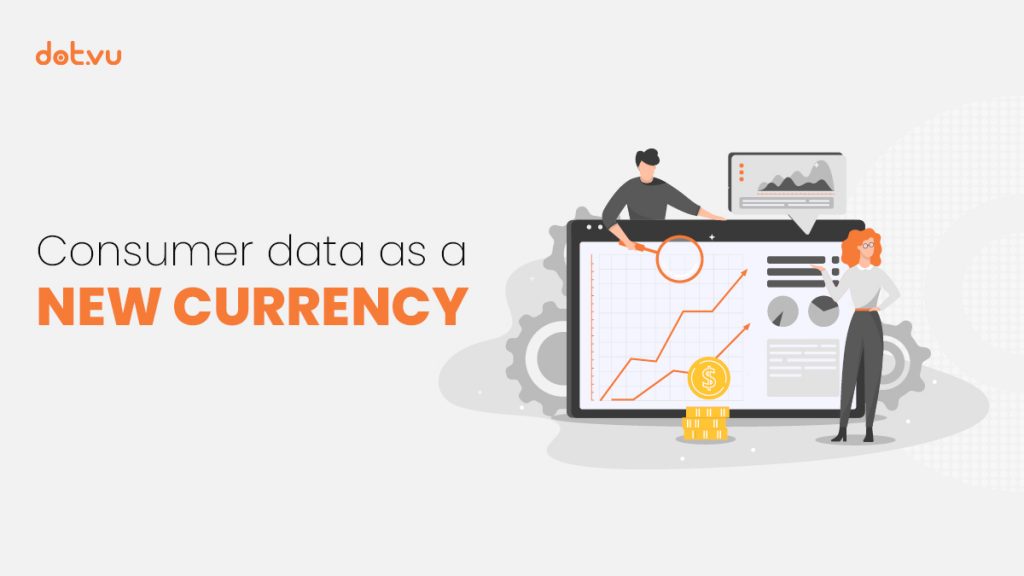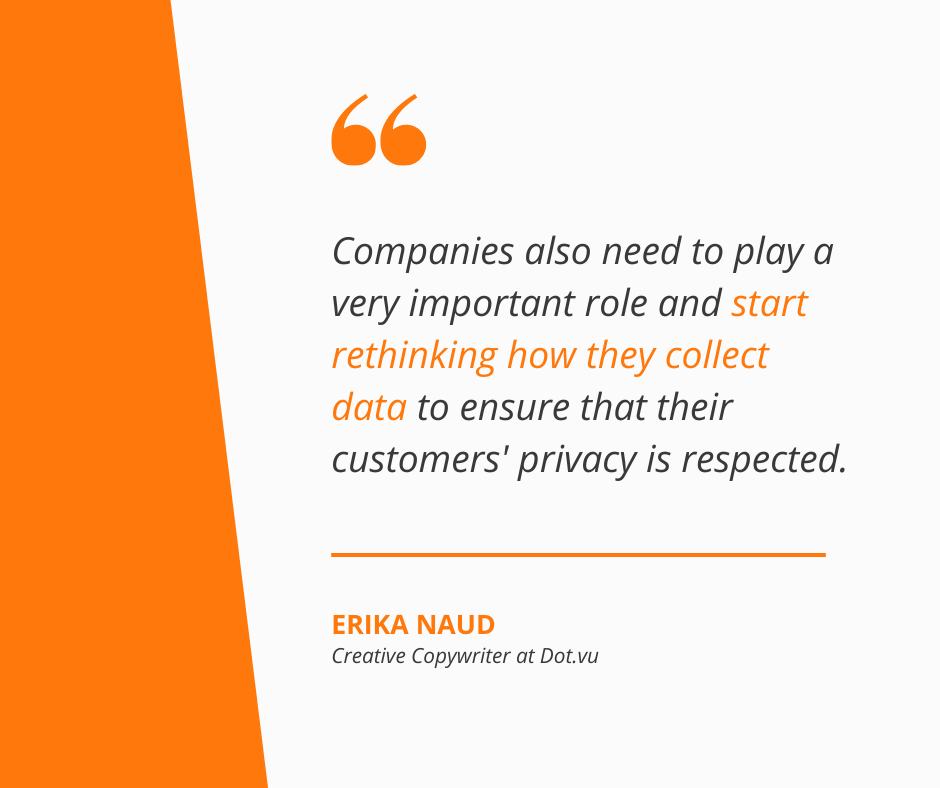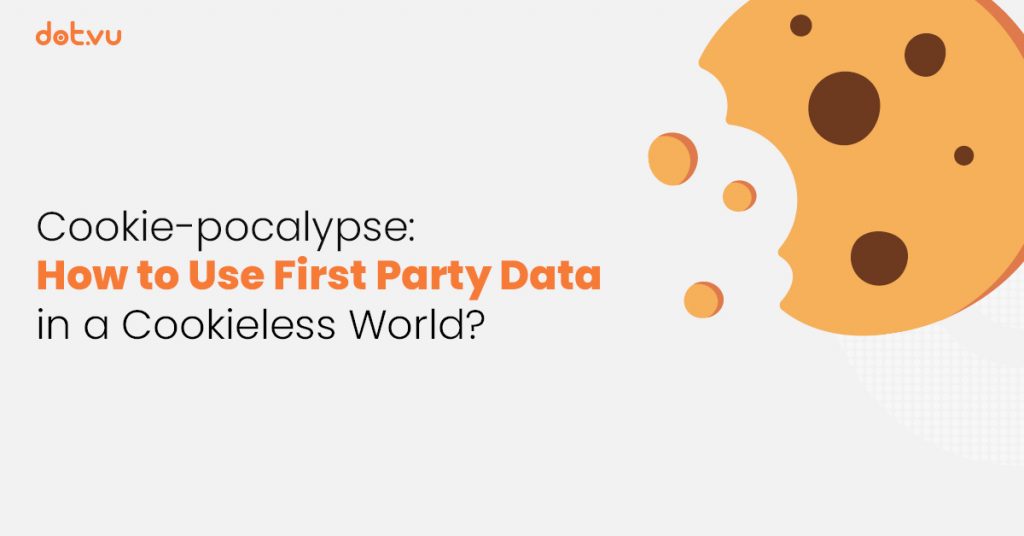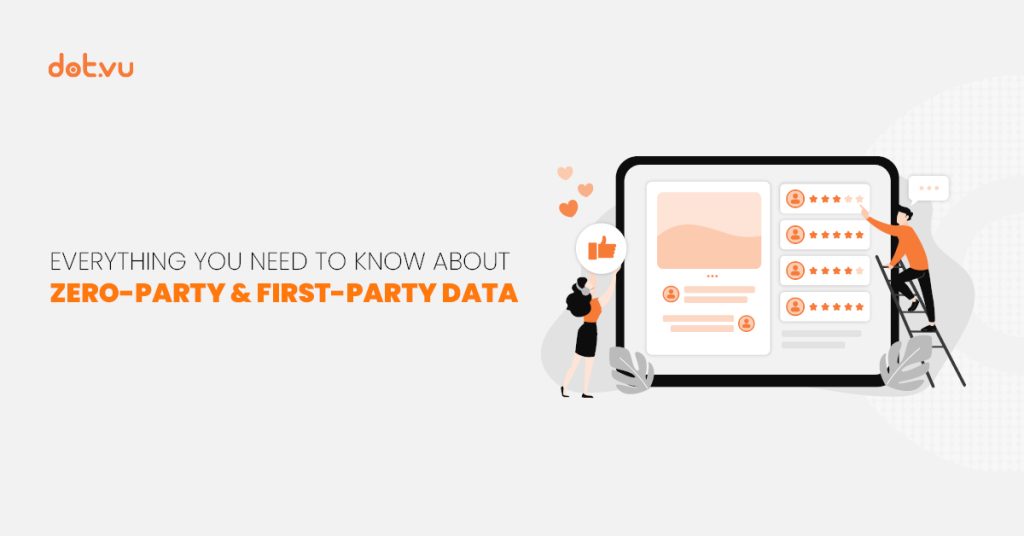
Data as of today is considered to be one of the most essential commodities. Digitalization, evolving technologies, and the never-ending hunger for pushing revenues higher have initiated a new battlefield for companies. Over the past years, an explosion of consumer data has enabled companies to pursue relationships more easily. One of the most common practices is aiming to offer tailored experiences and recommendations to end-consumers.
But how did all of this happen? The answer is the Internet. The newborn of the modern era is one of the most transformative innovations that has been the catalyst for this.
What is Consumer Data?
To have a better understanding, let’s first clarify the term. In short, everything is data. The stream of photos, phone calls, videos, emails, and messages, all sorts of interactions with social network platforms by users. Locations consumers visit, applications they use, the flood of information from hundreds of interconnected web devices, sending and receiving data. In other words, most of the consumers’ actions create some sort of data that is picked up and stored somewhere.
Consumer data is all the information customers leave behing during their interactions on the internet. Some examples include personal information, purchase history, product preferences, and behaviour.
What is Consumer Data as a Currency?
To ease any confusion around the subject, we need to look at the term and clarify its meaning. When hearing “currency”, it is common to think of paper notes, which are used to buy goods in everyday life. However, this is not correct. Currencies are anything that can serve as a medium of exchange of goods and services. This also depends on if there is an accepted form of payment for that currency.
In other words, data as a currency is an exchange of information that has a monetary value. Once the monetary value of data assets is identified, businesses can use it as a unit of exchange. An exchange in a transaction either on its own or with a combination of money.
The Use of Consumer Data Today…
Traditionally, when a currency transaction happens, people exchange cash for goods and services of equal value. However, this is not the case with data. The generators of the data, receive factually nothing in exchange. The data, which the generators capture, are only used to sell consumers more things in a targeted manner.
It is important to note that there are extensive opportunities to use data for much better engagement and service. However, as of now, it is explicitly used to just target customers and sell more, says Jane Barratt in a podcast. Barratt is the chief advocacy officer for MX Technologies, a Utah-based firm, providing data to financial institutions and fintech firms.
Companies buy, sell and trade data to generate more profit. Certain data they collect might be more valuable for other companies in different industries and vice versa.
The Emerging Importance of Data for Businesses
The amount of data that has been collected over the past few years is unimaginable. According to an article by Deloitte (2013), approximately 90% of the data was gathered in the past two years. Since then, this number has multiplied by 40 times and more, consisting of several personal details of billions of individuals.
Data has immense value, and businesses have been purchasing it for years and years to help themselves making more revenue. What makes consumer data so valuable is that it is accurate, live, personal, and unique. The reason it is essential for companies to collect data is because of the rising expectations from the customer side. Consumers expect companies to tailor online experiences their individual preferences and better satisfy their buying needs.
As a result, new technologies are emerging, as companies constantly work on artificial intelligence (AI). AI that turns unsorted data into personalized services to satisfy consumer needs and find new ways to generate more revenue.
Uncertainty Around Consumer Data Collection
The rising importance of data is just one side of the narrative. Despite the shift and the rising expectations of consumers, it is important to note that not everyone embraces these methods. Methods that are needed to collect data to pursue more personalized and tailored customer experiences. Nearly half of globally connected customers view online advertising as a way to simply sell more at the price of invading their privacy, according to Michelle Evans, Senior Head of Digital Consumer at Euromonitor International.
No wonder why there is an increasing number of regulations around data collection addressed. As an example, the introduction of GDPR in 2018, makes it more challenging for companies to acquire and use data. In addition, in January 2020 Google announced its plan to phase out third-party cookies in its Chrome browser. Meanwhile, all other major browsers, such as Firefox and Safari are planning or have already implemented the same regulations.
The point of these regulations is to better protect the privacy of consumers. Besides, it will incentivize companies to look for declared data, which the consumers approve of in exchange for receiving better personalized services.
What Can You Do as a Marketer to Solve This Issue and Keep Collecting Consumer Data?
Take advantage of first-party data and zero-party data. Think about the amount of data that you can already collect just from your audience. That is often the best source of data anyway.
Zach Williams Venveo CEO and founder, believes that email marketing is going to be an essential first-party data targeting solution as third-party cookies are being phased out. Even though email marketing is decades old, you should not forget about the potential return on investment of 4,000%. It is not only effective to drive sales and nurture relationships but also for understanding customers. It provides an exceptional touchpoint throughout the customer journey to collect data through opt-ins. Once there is a foundation of subscribers and data, it can be segmented in many ways. Therefore, it is such an essential marketing channel that provides the power to offer more personalized messages and experiences.
Collecting zero-party data is another way to solve this issue. It is data that consumers willingly share about their preferences, motivations, pain points directly with you. Essentially, this is the best imaginable source to collect data about your customers. It simply provides you with behavioral data points that other data sources miss out on.
For instance, in this Solution Suggesting Test, users share their pain points and their information (in the lead form) with you in exchange for your expert input.

How to Acquire Zero-Party Data?
One of the solutions is to implement conversational marketing chatbots on your website. It is already a known practice as numerous companies do it. Chatbots interact with customers in a personalized way and get smarter the more you use them. And the best part of all is that they collect a treasure of customer data.

Data Collection with Dot.vu
Another solution is to create Interactive Content. Embed it on your website to interact with your visitors in a much more engaging and personalized way. The more interactivity you are adding to your marketing strategy, the more you can attract and engage with your visitors. As consumers can be much more intrigued by highly visual Interactive Content, you can increase your engagement rates. Interactive Content invites consumers to actively participate instead of passively consuming content on your website.
Dot.vu allows you to collect zero-party data. For instance, with lead forms, you can invite participants to opt-in with their email. You will get information about their buying habits, needs, pain points, and product preferences. Finally, you can use it for remarketing purposes and overall to provide a smoother, more personalized buying experience. Learn more about how to collect data with our platform here at Dot.vu.
Related: What is Interactive Content?
Collect Consumer Data with Interactive Content
Data as a currency is here to stay. Consumer data as a source of revenue will only become more essential in today’s life. What is being forced to change around consumer data collection is the different approaches businesses use to acquire data. It should not be single-handedly used to only increase sales. Data provides opportunities, but regulations must come and set the boundaries for what can be done without invading people’s privacy.
Learn more about Interactive Content, and how it can help your business to acquire data and better understand your audience. To get your first project started, create a free account today, and explore what Dot.vu can do for you!

